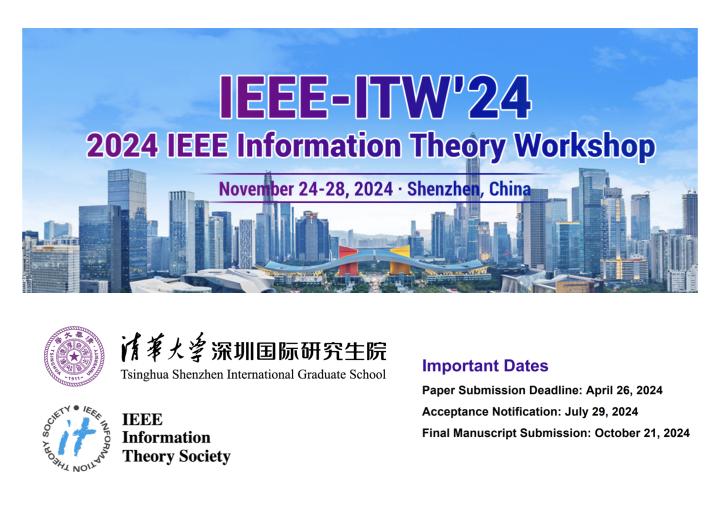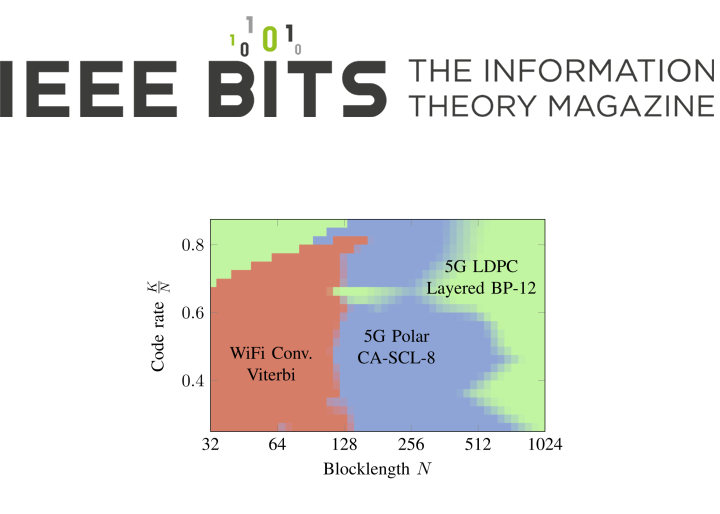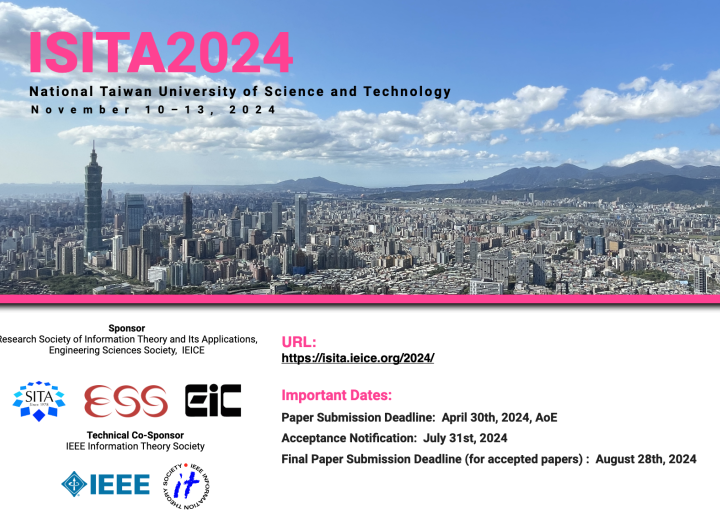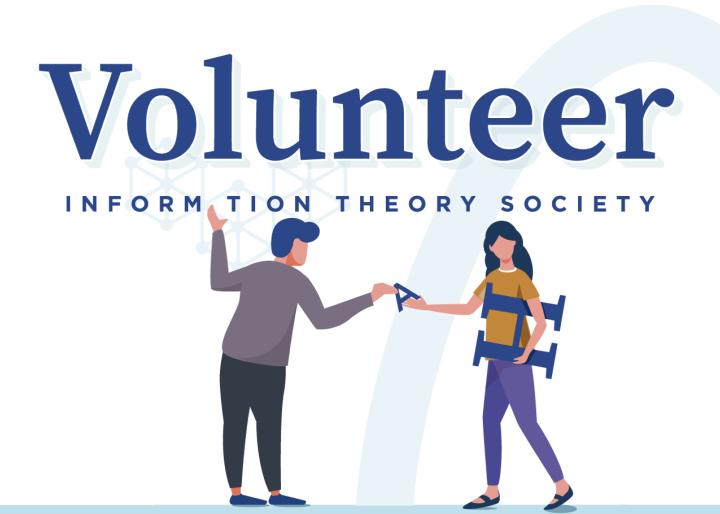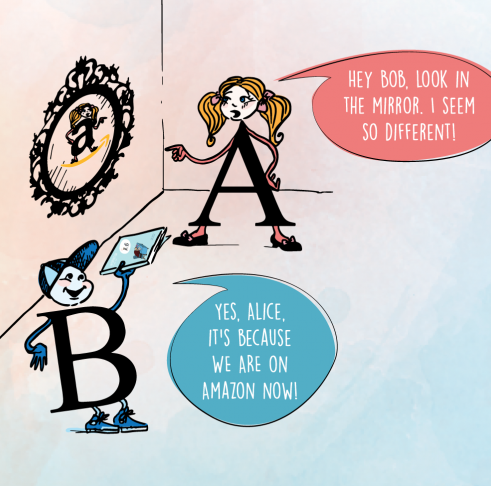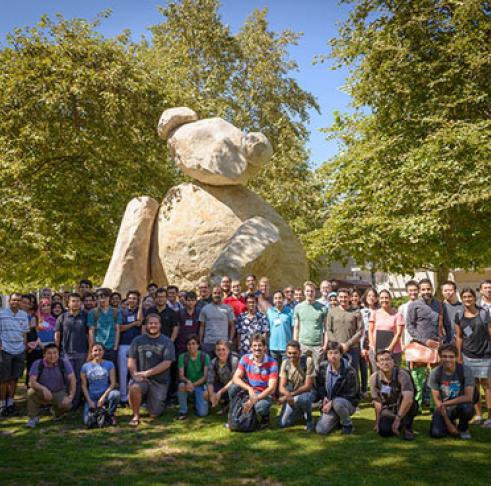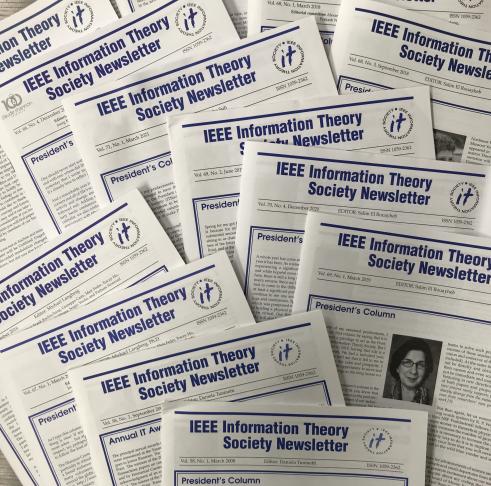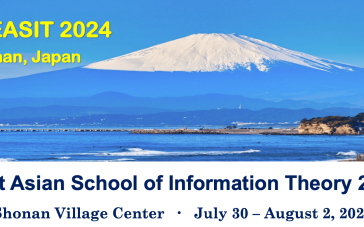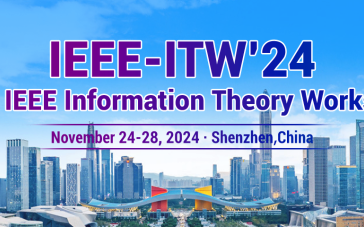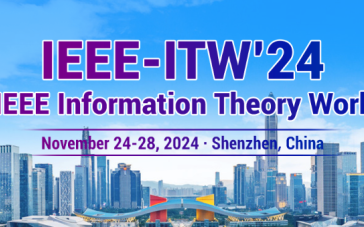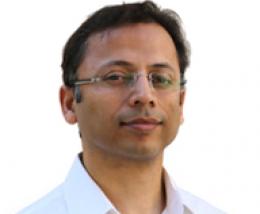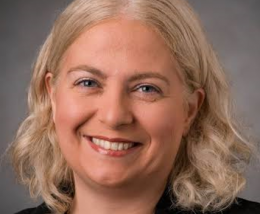Information Theory Society
The IEEE Information Theory Society is the premier professional society dedicated to the advancement of the mathematical underpinnings of information technology for the benefit of humanity. Information theory encompasses the processing, transmission, storage, and use of information, and the foundations of the communication process.
Aspects of Our Society
Outreach
A gathering of videos, books and more that show how information theory impacts our lives.Meet IT Society Students
The Student and Outreach Subcommittee plans student and outreach activities at symposia and workshops.Read Our Newsletter
The IEEE Information Theory Society Newsletter connects our members and is published four times a year. Beginning with the March 2022 issue, the Newsletter is online only.Upcoming Events
Ottawa, ON, Canada
IEEE North American School of Information Theory (NASIT) 2024
IEEE East Asian School of Information Theory (EASIT) 2024
Deadline Extension: IEEE-ITW'24
2024 IEEE Information Theory Workshop (ITW)
IEEE International Symposium on Information Theory (ISIT) 2025
News
Urbashi Mitra is the winner of the 2024 Aaron D. Wyner Distinguished Service Award
Urbashi Mitra was announced at ISIT2024 as the winner of the 2024 Aaron D. Wyner Distinguished…
Shannon Award for 2025
The IEEE Information Theory Society is pleased to announce that Peter Shor is the recipient of the…
2024 Jack Keil Wolf ISIT Student Paper Award Recipients Named
The three winning papers were announced before the Wednesday plenary session at ISIT 2024.
2024 Information Theory Society Paper Award Recipients Named
The award goes to two papers: P. Panteleev, G. Kalachev, “Asymptotically Good Quantum and Locally…
Conferences
ITC 2024: Information-Theoretic Cryptography
The Information-Theoretic Cryptography (ITC) conference will be held at Stanford University, August…
FOCS 2024
IEEE 65th Annual Symposium on Foundations of Computer Science (FOCS) will be held in Chicago, IL,…
WiOpt 2024 Workshop on Modeling and Optimization for Semantic Communications (MOSC) - October 21-24, 2024, South Korea
We are pleased to invite original papers to the Workshop on Modeling and Optimization for Semantic…
Jobs Board
Postdoctoral Research Associate Position on Quantum Information and Security at King's College London
Postdoctoral Researcher position at the Technical University of Munich
The TUM chair of communications engineering has an opening for a post-doc position at the…
Postdoc position in machine learning over wireless networks
Join Prof. Durisi's team at Chalmers (Gothenburg, Sweden) as a postdoc, to work on an exciting…
Call to Action
Recent Journal Issues
JSAIT is a multi-disciplinary journal of special issues.
The IEEE Transactions on Information Theory publishes papers concerned with the transmission, processing, and utilization of information.
Research In Information Theory
Shannon, Euler, and Mazes
One of Claude Shannon’s best remembered “toys” was his maze-solving machine, created by partitions on a rectangular grid. A mechanical mouse was started at one point in the maze with the task of finding cheese at another point. Relays under the board guided successive moves, each of which were taken in the first open counterclockwise direction from the previous move. In belated honor of Shannon’s centenary and of amnesia in the mouse at age 70, we compare this deterministic search strategy with ...
6G: The Personal Tactile Internet—And Open Questions for Information Theory
The initial vision of cellular communications was to deliver ubiquitous voice communications to anyone anywhere. In a simplified view, 1G delivered voice services for business customers, and only 2G for consumers. Next, this also initiated the appetite for cellular data, for which 3G was designed. However, Blackberry delivered business smartphones, and 4G made smartphones a consumer device. The promise of 5G is to start the Tactile Internet, to control real and virtual objects in real-time via c...
Function Load Balancing Over Networks
Using networks as a means of computing can reduce the communication flow over networks. We propose to distribute the computation load in stationary networks and formulate a flow-based delay minimization problem that jointly captures the costs of communications and computation. We exploit the distributed compression scheme of Slepian-Wolf that is applicable under any protocol information. We introduce the notion of entropic surjectivity as a measure of function’s sparsity and to understand the li...
Reed–Muller Codes: Theory and Algorithms
Reed-Muller (RM) codes are among the oldest, simplest and perhaps most ubiquitous family of codes. They are used in many areas of coding theory in both electrical engineering and computer science. Yet, many of their important properties are still under investigation. This paper covers some of the recent developments regarding the weight enumerator and the capacity-achieving properties of RM codes, as well as some of the algorithmic developments. In particular, the paper discusses the recent conn...
Deep Neural Network Approximation Theory
This paper develops fundamental limits of deep neural network learning by characterizing what is possible if no constraints are imposed on the learning algorithm and on the amount of training data. Concretely, we consider Kolmogorov-optimal approximation through deep neural networks with the guiding theme being a relation between the complexity of the function (class) to be approximated and the complexity of the approximating network in terms of connectivity and memory requirements for storing t...



